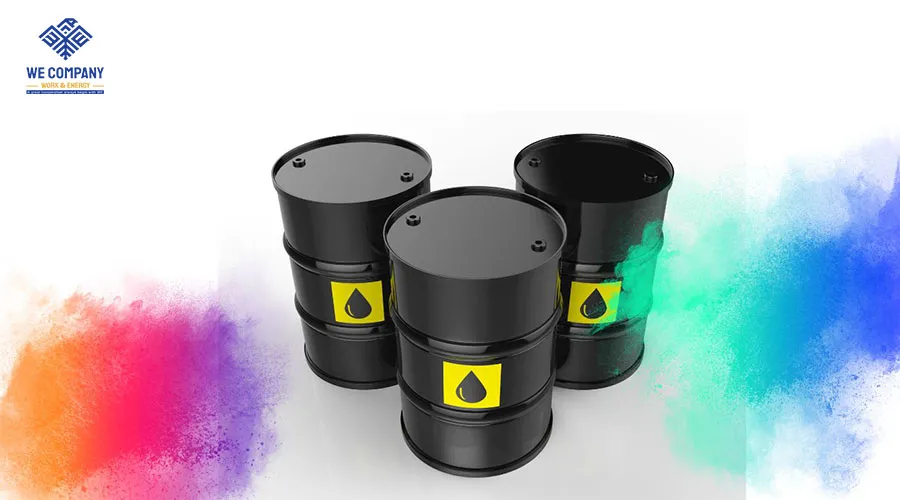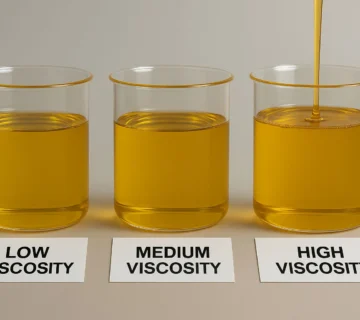Base Oil Density: Importance, Grades, and Measurement Methods
Base oil density plays a vital role in the performance, formulation, and application of lubricants across various industries. Whether you are a manufacturer, distributor, or buyer of petroleum-based products, understanding the density of base oil is essential for quality control, blending accuracy, and ensuring product compatibility.
In this article, we’ll explore what base oil density is, how it’s measured, its typical values for different groups, and why it matters in the lubricant and petrochemical industries.
What Is Base Oil Density?
Density is defined as the mass per unit volume of a substance. In the context of base oils, density typically refers to the mass (in kilograms) of one liter of oil at a standard temperature (usually 15°C or 20°C). It is expressed in units like kg/m³ or g/cm³.
Base oil density is influenced by the oil’s chemical composition, refining process, and the presence of aromatic or paraffinic compounds.
Why Is Base Oil Density Important?
Understanding and monitoring the density of base oil is crucial for several reasons:
✅ Blending Accuracy: Lubricant manufacturers rely on accurate density values to blend additives properly and achieve the desired viscosity grades.
✅ Storage & Handling: Density affects the volume-to-weight ratio, which is critical for transportation and storage calculations.
✅ Quality Control: Variations in density can indicate contamination or inconsistencies in the refining process.
✅ Compatibility: Base oil density impacts the formulation when mixing different oil types or additives.
Typical Density of Base Oil Grades
Base oils are classified into API Groups I to V, and each group has different physical properties, including density.
| Base Oil Group | Typical Density @ 15°C (g/cm³) | Description |
|---|---|---|
| Group I | 0.880 – 0.910 | Solvent-refined, contains aromatics |
| Group II | 0.860 – 0.880 | Hydrotreated, higher purity |
| Group III | 0.840 – 0.870 | Severely hydrocracked, high VI |
| Group IV (PAO) | 0.830 – 0.860 | Synthetic polyalphaolefins |
| Group V (Esters) | 0.900 – 0.940 | Special synthetic oils |
How Is Base Oil Density Measured?
The most common methods for measuring base oil density include:
🌡 ASTM D4052: Digital density meter using oscillating U-tube method.
🌡 ASTM D1298: Manual method using a hydrometer in a graduated cylinder.
🌡 ISO 3675: Hydrometer method similar to ASTM D1298, used internationally.
These standardized methods ensure consistent results across laboratories and industries.
Factors Affecting Base Oil Density
Several factors can influence the density of base oil:
Temperature: Density decreases as temperature increases. It’s crucial to correct density to a reference temperature.
Aromatic Content: Higher aromatic content increases density.
Additive Content: Additives used in lubricant blending may increase or decrease overall density.
Purity and Refining: Highly refined base oils have lower densities due to reduced impurities.
Density vs. Viscosity in Base Oils
Although often mentioned together, density and viscosity are different:
Density: Mass per volume, affects storage and blending.
Viscosity: Resistance to flow, affects lubrication performance.
However, both are interdependent in formulation and product selection for applications like engine oils, hydraulic fluids, and industrial lubricants.
Conclusion
Base oil density is a key physical property that affects everything from product formulation to logistics and quality control. By understanding how density varies with base oil groups and how it can be accurately measured, businesses can ensure better product performance and compliance with industry standards.
Contact Us
Need help selecting the right base oil or want to request a quote? We’re here to assist you.
WhatsApp: (+971) 585992028
Phone: (+971) 58 599 20 28
Email: info@workandenergy.com
Office Address: No. 106, Sabkha Tower, Deira, Dubai, UAE






No comment